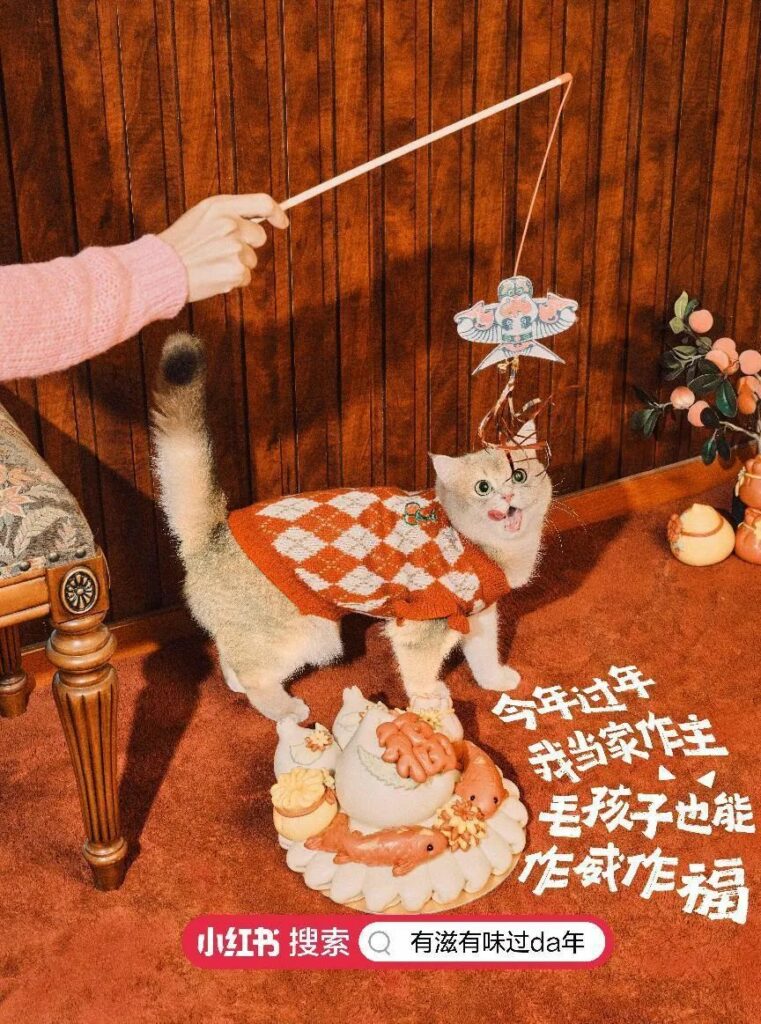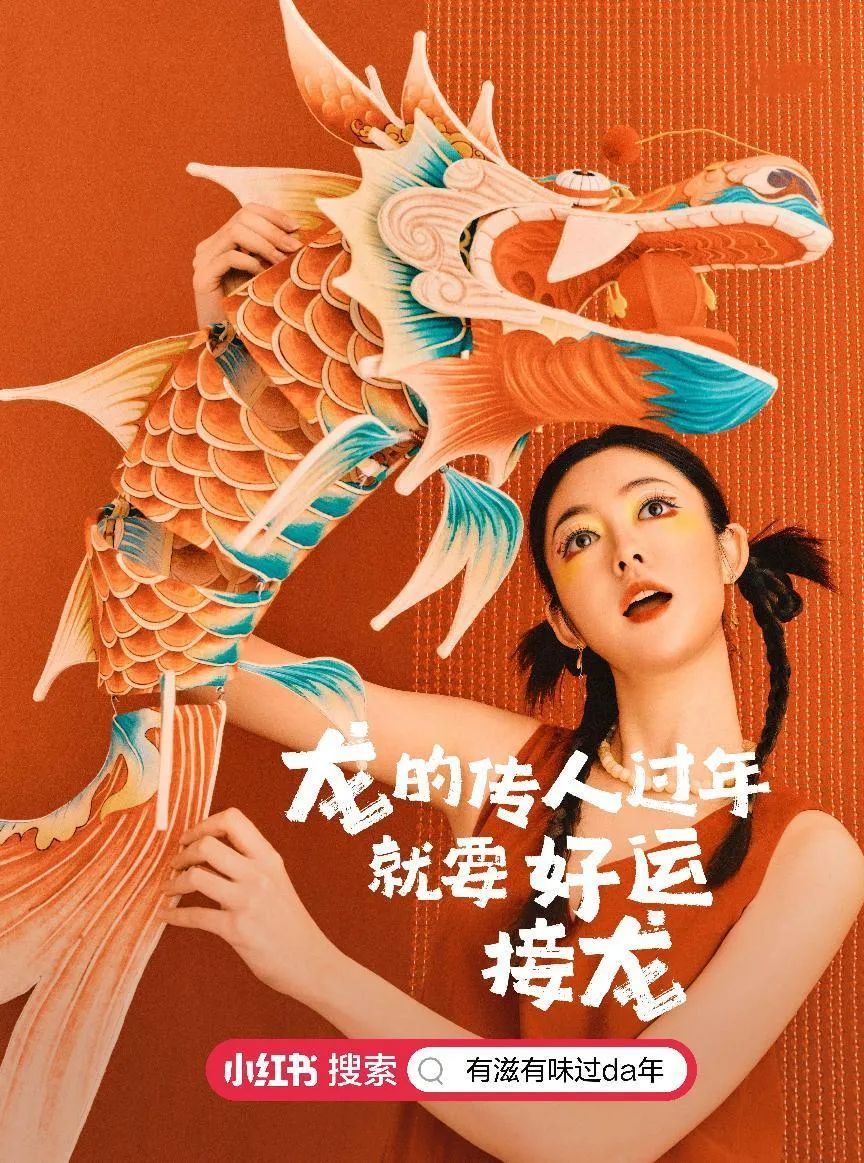In an era where digital platforms are reshaping consumer behavior, Xiaohongshu (Little Red Book) stands out as a strategic social media and e-commerce platform in China, especially in the realms of lifestyle, fashion, and luxury goods. With its unique blend of user-generated content, influencer marketing, and integrated shopping features, Xiaohongshu has become a crucial player in China’s rapidly evolving digital landscape. For brands looking to penetrate or expand their presence in the Chinese market, understanding and leveraging this platform is key to connecting with a vast and engaged audience.
Chinese New Year is Feb 10th 2024
As the Chinese New Year (CNY) approaches, brands are shifting their marketing focus towards this significant holiday. Unlike the typical online shopping festivals characterized by their “buy, buy, buy” mentality, the Chinese New Year is China’s most important traditional festival, marked by distinctive holiday imprints in people’s consumption purposes, meanings, habits, and scenarios.
CNY marketing by Xiaohongshu / RED
According to the recent CNY marketing conference held by Xiaohongshu in collaboration with the research consulting firm Rui Cong, there has been a shift in how the younger generation in China is celebrating the Spring Festival. This change is not only creating new festival forms for this traditionally uniform holiday but is also opening up innovative avenues for brands to engage with these young consumers.
Red Xiaohongshu, in partnership with GMA

What are “Xiaohongshu 2024 CNY Industry Trend”
We will reveal to you eight major trends of how young people are spending the Spring Festival and providing targeted marketing solutions for food and beverage brands on Xiaohongshu. Interested readers can follow Xiaohongshu’s business dynamics public account and reply with CNY to obtain the full “Xiaohongshu 2024 CNY Industry Trend Report”.
The article provides fresh insights for CNY growth, noting significant changes in how young people are spending the festival in 2024. The Spring Festival, as a traditional festival, carries strong emotional and hopeful sentiments. However, for the younger generation, the meaning of the Chinese New Year extends beyond just family reunions. As post-95s young people take over the purchasing for the New Year goods, each consumption bears a variety of meaningful changes.

Festival Meaning: Emphasis on Emotional Release and Satisfaction
- “It’s Okay, New Year Will Forgive”: After a year of hard work, people long to relax during the New Year, indulging in snacks, sparkling water, and alcoholic beverages… all of which are permitted and forgiven during the festival.
- Childhood Memories Make a Comeback: According to Ipsos’s “Xiaohongshu Food and Beverage Industry Insight Report”, 35% of consumers wish to purchase “tastes of childhood”. Buying snacks from their memories to relive the carefree joys of childhood is an important way for young people to release stress and find emotional healing.
- “Everything Happens for My Benefit”: Young professionals, especially those who have just started working, look forward to good fortune in the New Year. They show greater interest in small superstitions that could bring them luck, expecting brands to add to their fortune.
- “Parents, Please Pass the Baton to Me”: Beyond self-emotional release, young people also seek understanding, support, and protection from their family harbor. From “escaping the New Year” to becoming the “main organizer” of the family’s New Year, young people in 2024 who create their own memories are also a major force in New Year goods consumption.
Festival Scenario: Multi-Dimensional Scenarios Play Out New Year Goods

Post-pandemic, young people value health more in their gift-giving scenarios during the New Year, integrating more care for health. At the same time, they are closer to nature, and traveling with family and friends during the New Year has become more common.
The Chinese New Year (CNY) marketing strategy has started to pivot significantly. Contrasting with the straightforward purchasing frenzy of online e-commerce festivals, the Chinese New Year, China’s most important traditional festival, embodies unique consumption motives, meanings, habits, and scenarios, all branded with a distinct festive imprint.
The focus on emotional value, for the Chinese new year

health and wellness, and emotional healing during CNY is becoming increasingly important among young consumers. Healthy New Year goods are viewed as crucial by the youth, with gifting health emerging as a key trend in food and beverage consumption.
Festival Culture: Unlocking New Trends in Celebration
- Emotional Release and Satisfaction: The concept of forgiveness and indulgence during the New Year is appealing to young consumers. They seek comfort in snacks and beverages, a welcome break from the year’s hardships.
- Childhood Nostalgia: A significant percentage of consumers are looking to purchase products that remind them of their childhood, indicating a trend towards emotional healing and stress relief.
- Cultural Resurgence and Consumption Trends: The revival of traditional Chinese culture is becoming an important trend in the consumer domain. For the post-95 generation, the cultural richness and rituals of the Spring Festival are integral parts of the celebration.
- Culinary Cultural Awakening: The rise of cultural confidence among young people has fueled their preference for regional cultural delicacies, seeking a “taste of culture” through distinctive cuisines.
RED Deep Dive into Segment-Specific Needs
The behind-the-scenes directions of these trends actually point to lifestyle changes among young people and their increasingly segmented consumer needs. Brands need to adjust their marketing strategies to these segmented groups and make forward-looking strategic plans to gain an edge in CNY marketing.
The Xiaohongshu Fast-Moving Consumer Goods CNY marketing conference identified key trends and, based on the consumption trajectories of young people, pinpointed eight Xiaohongshu CNY-specific interest groups for food and beverage brands. This approach assists brands in achieving “tailored” precision with Red Native Advertising.
Fashionchinaagency Conclusion
Post-pandemic, there is a surge in consumer enthusiasm, driving a revival across various industries. Food and beverage brands, in particular, are experiencing a full recovery in their CNY consumption scenarios this year. However, facing the diversified and segmented demands of the new primary consumers of New Year goods, food and beverage brands must delve deeply into the psychology and consumption patterns of today’s youth.
Brands’ insights must extend beyond providing consumers with the products they need to encompass all aspects of the target audience’s consumption trajectory. By doing so, brands can more accurately understand how to appeal to and effectively reach their target consumers to maximize marketing benefits. Xiaohongshu’s segmentation of consumer groups and in-depth insights into their needs and content preferences undoubtedly offer a shortcut to achieving this goal.
GMA * Xiaohongshu
Navigating the intricate ecosystem of Xiaohongshu requires specialized knowledge and expertise, particularly when tailoring content and strategies to resonate with Chinese consumers. This is where GMA (Gentlemen Marketing Agency) comes into play, offering specialized services for brands aiming to make an impact on Xiaohongshu.

As an agency deeply versed in the nuances of Chinese social media and e-commerce, GMA provides invaluable insights into consumer trends, content creation, influencer collaborations, and digital marketing strategies tailored for Xiaohongshu.
By partnering with GMA, brands can effectively harness the power of Xiaohongshu to build a strong, engaging presence in the Chinese market, ultimately driving growth and success in one of the world’s most dynamic consumer landscapes.

